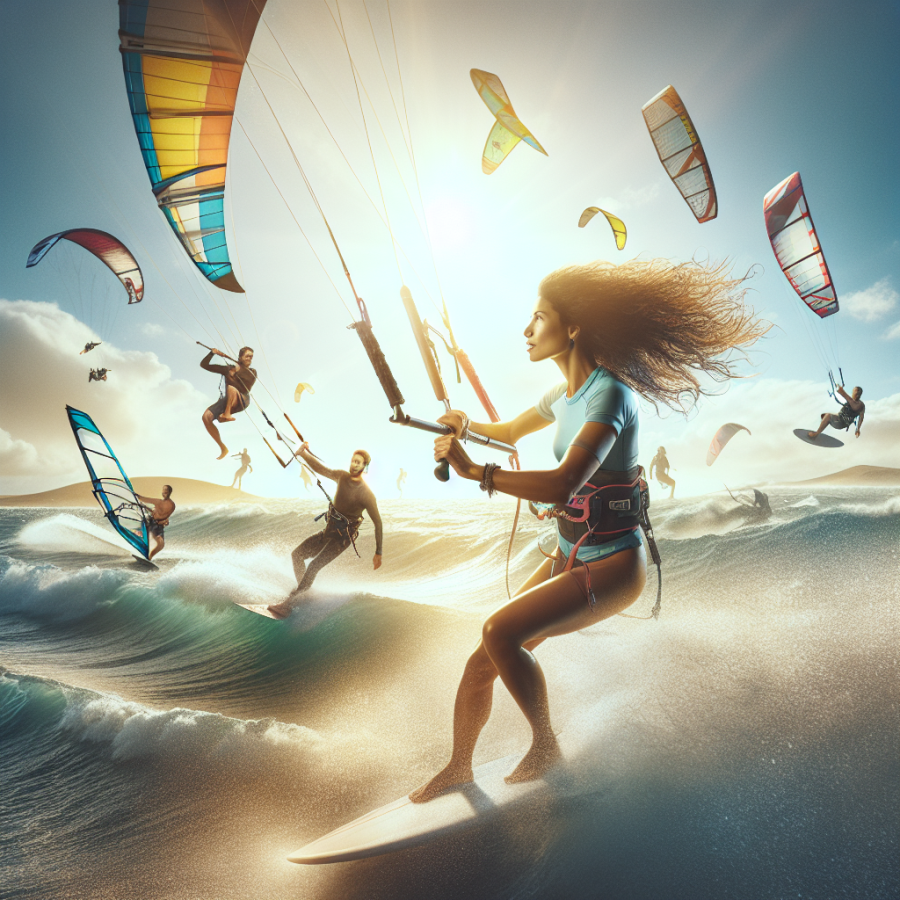Exploring the Adrenaline-Fueled World of Wind-Powered Sports
Wind-powered sports offer an exhilarating blend of speed, skill, and adventure that is hard to match in any other category of recreational activity. Harnessing the wind's raw power not only taps into an ancient human practice but has also given rise to a variety of modern sports that attract thrill-seekers across the globe.
Sailing is perhaps the oldest and most recognized wind-powered sport. The art of navigating a vessel across water using sails is as old as maritime history itself. Modern competitive sailing ranges from small dinghy races to massive yacht regattas, each demanding a deep understanding of wind patterns, water currents, and sail dynamics. Racing tactics can be complex, and the subtle adjustments made to harness even the slightest breeze can make the difference between victory and defeat.
Another exciting sport is windsurfing, which combines elements of sailing and surfing, requiring a unique balance of skill, strength, and agility. A windsurfer stands on a board and maneuvers a sail attached by a flexible joint to catch the wind, carving through the water at impressive speeds. This sport can be practiced in a variety of settings, from calm lakes to waves on the ocean, making it versatile and widely enjoyed by many levels of enthusiasts.
Kitesurfing, also known as kiteboarding, is a thrilling sport where riders harness wind power with a large controllable kite while standing on a board. It can be performed on flat water, waves, and even during strong storms for the most extreme athletes. The ability to jump and perform aerial tricks adds an acrobatic element to kitesurfing, making it a favorite for those who enjoy an adrenaline rush.
Land sailing, also known as sand yachting or land yachting, takes the principles of traditional sailing and applies them to a wheeled vehicle that moves over land. Driven by a sail mounted on a three-wheeled chassis, land sailors can reach high speeds and enjoy racing on beaches or dry lake beds, where flat, wide-open spaces are abundant.
Iceboating is the winter equivalent of sailing, where specially designed boats called iceboats are equipped with skates or runners to glide across frozen lakes and rivers. The hard, slippery surface of the ice significantly reduces friction, which allows these vessels to achieve speeds that often surpass the wind's speed.
Each of these wind-powered sports requires not only physical fitness and technical skill but also a deep understanding of meteorological conditions.
Read also:
Understanding the Evolution of Rifle Technology and Design
Mastering the Elements: Techniques and Tips for Wind Sports Enthusiasts
When it comes to mastering wind sports, whether it's sailing, windsurfing, kitesurfing, or any other wind-powered thrill, understanding and utilizing the elements to your advantage is crucial. Here, we delve deep into the strategies and insider knowledge that will help you elevate your performance and enjoyment of these exhilarating activities.
**Understanding Wind Patterns and Conditions**
The first step to excelling in any wind sport is to gain a keen understanding of wind patterns and how they affect your chosen activity. Look for local wind forecasts and pay attention to live weather updates. Familiarize yourself with terms such as onshore, offshore, and side-shore winds, as each type has its implications for safety and performance.
**Rigging and Equipment Tuning**
The correct rigging of your equipment is paramount to maximizing efficiency and control. For example, windsurfers must learn to adjust sails according to wind strength and direction. By correctly tuning your kite or sail, you ensure it's capturing the optimal amount of wind, which can greatly enhance your speed and maneuverability.
**Stance and Body Positioning**
Your stance and how you position your body has a significant impact on how you harness the wind. Keeping your body's center of gravity low and centered over your board or boat can help maintain balance. Constantly adjust your stance to deal with changing conditions; this could mean leaning more into the wind or changing the angle of your sail or kite.
**Techniques for Powering Up and Depowering**
Learning when and how to adjust the power you're harnessing from the wind is a critical skill. This may involve sheeting in your sail to increase power in lighter winds or sheeting out when you need to depower because of a gust. In kitesurfing, you'll need to learn to angle your kite to catch the wind more effectively or position it to reduce power when necessary.
**Maneuvering and Turning**
Mastering turns, such as jibes in windsurfing or transition turns in kitesurfing, is essential. Your timing, the positioning of your sail or kite, and your understanding of the wind all play a role. Practicing these maneuvers in varying wind conditions can lead to more fluid and controlled turns.
**Safety and Navigation**
Safety cannot be emphasized enough. Always wear appropriate safety gear, understand right-of-way rules, and know how to signal for help.




